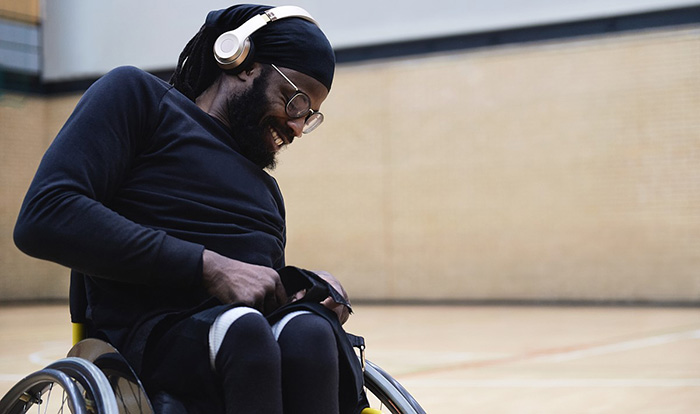New Guidance On Accessible And Inclusive Facilities By Sport England

Aimed at planners, architects, building owners and operators, their Accessible and inclusive sports facilities guidance encourages the design of spaces that reduce or remove barriers to being more active.
That includes creating and maintaining facilities that are accessible to disabled people and meet the needs of our vibrant and diverse communities, such as those related to faith, sex, sexuality and gender identity.
The document is the current standard in this area, replacing our previous Accessible Sports Facilities Design Guidance, originally published in 2010.
Its expanded title and content are reflective of a broader, more nuanced approach to inclusion – another step in our long‑term Uniting the Movement vision of unlocking the advantages of sport and physical activity for everyone.
In the introduction to the guidance, our director of equality, diversity and inclusion in sport, Viveen Taylor, writes: “The built environments where movement and physical activity take place can sometimes be a person’s biggest barrier to being more active.
“This guidance provides the technical Information needed to ensure that our facilities are not just functionally accessible but intuitive, inviting, and capable of both attracting and meeting the needs of our increasingly diverse communities.”
- Placing people at the heart of the design process to reflect the needs of the community.
- Acknowledging diversity and difference to help make everyone feel welcome, safe and without anxiety.
- Offering choice where a single design solution cannot accommodate all users.
- Providing for flexibility in use.
- Providing convenient and enjoyable environments for everyone to use with dignity and privacy.
In producing AISF, we incorporated feedback and comments from more than 80 stakeholders, including government departments and agencies, access and inclusion organisations, national governing bodies, framework consultants and our own staff.
It has resulted in robust and diverse guidance covering a range of areas essential to the design and operation of accessible and inclusive sports facilities, including changing and toilet provision, wayfinding and signage, and emergency evacuation.
The guidance is available as a series of accessible documents.
Their strategic lead for equality, Aedan Wolton, has also written a blog to introduce the guidance, which is an essential tool for our long‑term strategy Uniting the Movement.

Images Credit: Sport England.











































